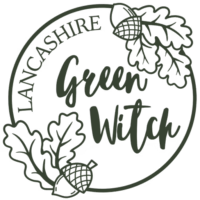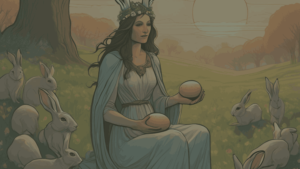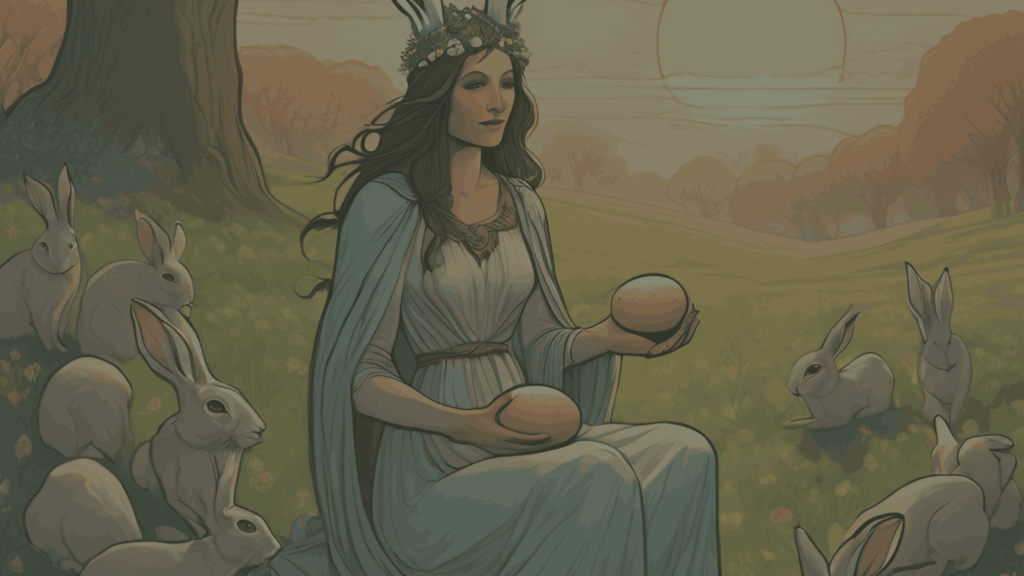The Goddess Eostre and Her Connection to Ostara
As the spring equinox approaches, many of us feel a powerful sense of renewal in the air. It is the time of Ostara, a sabbat that celebrates the balance of light and dark, the return of the sun, and the blossoming of nature. Central to this celebration is the goddess Eostre, whose mythology deeply intertwines with the themes of rebirth, fertility, and abundance. But who exactly is Eostre, and what is her connection to the festival of Ostara? Let’s delve into the magical world of this ancient goddess and her sacred symbols that continue to resonate with us today.
The Mythology of Ostara: The Return of Light
Ostara, also known as the Spring Equinox, is a festival that marks the moment when day and night are in perfect balance. This celebration, falling around March 21st, represents the end of winter’s cold grip and the beginning of the life-giving warmth of spring. It is a time to sow seeds for both physical crops and spiritual growth, making it a vital sabbat in the pagan wheel of the year.
The goddess Eostre is intimately connected with Ostara, and her myth is deeply tied to the turning of the seasons. Eostre is often referred to as the goddess of dawn, spring, fertility, and renewal. She brings forth the energy of new beginnings, and her arrival heralds a time when the Earth awakens from its winter slumber. In many ancient cultures, Eostre was celebrated as a symbol of fertility and rebirth, with her festivals marking the turning of the wheel towards more abundant and light-filled days.
Eostre: The Goddess of Dawn and Spring
The name Eostre is thought to derive from the Old High German word “ostara,” meaning “dawn.” This is fitting, as Eostre is often depicted as a radiant, youthful figure who rises with the sun to bring light and warmth to the world. In some legends, she is said to have the power to cause flowers to bloom and animals to awaken, signifying the start of the fertile season.
Eostre’s role as the goddess of spring is pivotal in her connection to Ostara. Spring is traditionally a time for planting seeds, both literally and metaphorically. Eostre’s energy embodies this principle of growth and transformation, as she nurtures the Earth’s fertility and encourages the flourishing of life.
Eostre’s Sacred Animal: The Hare
One of the most famous symbols associated with Eostre is the hare. The hare is considered her sacred animal and is often depicted alongside her in various myths and iconography. But why the hare? What does it represent in the context of Ostara and Eostre’s mythology?
Hares are renowned for their agility and speed, making them a perfect symbol of the changing season. As the Earth shifts from winter’s dormancy to spring’s vitality, the hare embodies the energy of quick transformation. In addition to their agility, hares also reproduce quickly, making them a natural symbol of fertility and abundance. The connection between the hare and Eostre reinforces the themes of new life and growth that are so central to Ostara.
In many cultures, hares were seen as magical creatures, often associated with lunar cycles and fertility rituals. This further strengthens the symbolism of the hare as a representation of the life-giving forces of nature, which Eostre governs.
The Egg: A Symbol of Life and Creation
Another potent symbol tied to Eostre and Ostara is the egg. The egg, as a symbol of life, creation, and the infinite cycle of nature, carries deep significance during this time of year. As we celebrate the return of spring and the growing light, the egg embodies the potential of new beginnings.
In many traditions, eggs are decorated and exchanged during the Ostara festival as a way of honouring the goddess’s energy of rebirth. The egg is seen as a physical representation of the cycle of life – from birth to death to rebirth. This symbolism resonates deeply with the themes of transformation and renewal that Ostara brings.
The association between Eostre and the egg is likely rooted in the ancient belief that the goddess herself could bring forth new life from the eggs of birds and other creatures. Over time, this symbolic connection became incorporated into the modern-day Easter celebrations, where the egg continues to play a central role.
The Energy of Ostara: Rebirth and Fertility
Ostara is a time to embrace the energy of renewal and fertility in all aspects of our lives. Whether you’re planting physical seeds in your garden or sowing new ideas and intentions for the year ahead, this is a powerful time to set goals and manifest your desires. Eostre, as the goddess of spring, helps us align with the natural rhythms of growth and abundance.
The fertility associated with Eostre is not just about physical reproduction but also about creative expression and spiritual growth. This is a time when we can nurture the seeds of our dreams and watch them begin to take root. Just as the Earth comes alive with the promise of new life during the spring, so too can our personal and spiritual pursuits blossom.
Celebrating Ostara and Eostre: Rituals and Practices
Ostara is a joyous celebration that can be marked by a variety of rituals and practices. Here are some ways to honour Eostre and the themes of Ostara during this sacred time:
- Decorate Eggs: Honour the egg as a symbol of new life and creation by decorating eggs with symbols of fertility and renewal. You can also use the eggs in divination rituals, symbolising the potential of new beginnings.
- Spring Cleaning: Clean your home to make space for new energy and opportunities. Spring cleaning is a symbolic act of clearing away the old to make room for the new, much like the Earth sheds its winter coat to welcome the warmth of spring.
- Plant Seeds: Whether you’re planting flowers, herbs, or vegetables, sowing seeds is a powerful way to connect with the fertility of the Earth. This can be done in your garden or through indoor planting rituals.
- Candle Magic: Use candles in shades of green, yellow, and pink to invoke the energy of growth, renewal, and love. Light candles on your altar to honour Eostre and invite her blessings into your life.
- Create an Altar: Set up an altar dedicated to Eostre with symbols such as hares, eggs, flowers, and the colours of spring. Use this space for meditation, reflection, and to align your intentions with the energy of the season.
Eostre’s Legacy in Modern Witchcraft
Although Eostre’s specific worship may not be as widespread today as it was in ancient times, her energy continues to influence modern witchcraft and pagan practices. The celebration of Ostara is still a vital part of many Wiccan and pagan traditions, and the goddess herself remains a powerful symbol of the cycles of nature and the potential for new beginnings.
In modern witchcraft, Eostre is often invoked during spells for fertility, creativity, and personal growth. Her energy is also used to help release the old and make way for the new, making Ostara an ideal time for setting intentions and manifesting one’s desires. Whether through rituals, offerings, or simple reflection, the energy of Eostre and Ostara remains a source of inspiration for witches around the world.
Conclusion: Embracing the Magic of Eostre and Ostara
Ostara, with its focus on balance, renewal, and new beginnings, is a powerful sabbat that invites us to reconnect with the rhythms of nature. The goddess Eostre, with her association to dawn, spring, fertility, and the symbols of the hare and egg, serves as a reminder of the abundant potential for growth and transformation that lies within each of us.
As we celebrate the return of the light and the promise of spring, let us honour the legacy of Eostre and the timeless wisdom of the Earth. Whether through rituals, reflections, or creative endeavours, Ostara invites us to embrace the magic of rebirth and the infinite cycles of nature.
By weaving the rich mythology of Eostre and her sacred symbols into our lives, we can tap into the powerful energy of Ostara to bring forth abundance, fertility, and new beginnings in all areas of our lives. May the goddess of dawn and spring illuminate your path as you embark on this season of growth and transformation.
Discover more from Lancs Green Witch
Subscribe to get the latest posts sent to your email.



